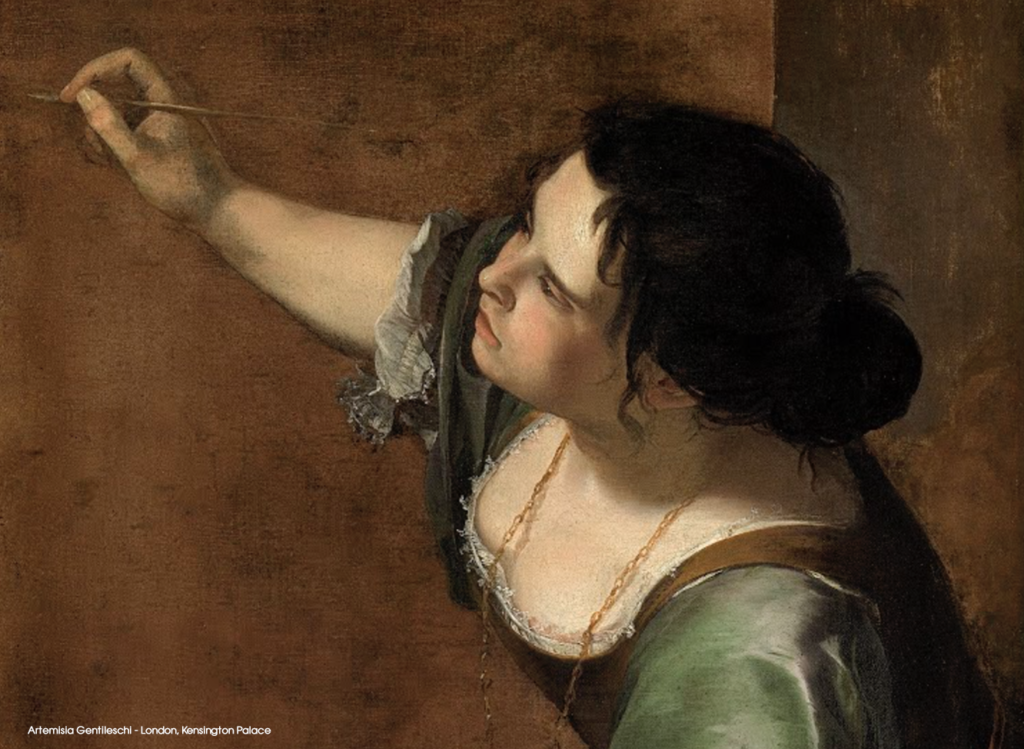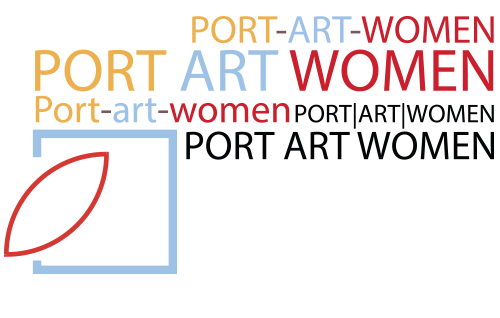Analysis of the results of a research on the potential of women and the obstacles to overcome
by Ornella Urpis

1. Introduction
Women have always suffered from a lack of active presence in the market and in society. Often relegated to the humblest jobs or – on equal merit with men from the professional point of view – paid less, they are the pillar of the family organization through their unpaid care and assistance work and represent the driving force of welfare.
Their recognized presence in art is relatively recent and still suffers from a position of subjection. In various researches by Digital Humanities it was found the limitation of the spread of female art on the web, as well as the difficulty of accessing the use of IT tools and social networks.
Scholars such as Michelle Moravec and others have shown through the analysis of the network that there is a limited diffusion of women’s works of art compared to those of men: even in the case of famous artists, the analysis of the network has proved rather difficult (Brown and Elspeth 2020).
Much depends on a decidedly discriminating culture even within the world of art with all the consequent difficulties for women in accessing the opportunities for valorisation and listing of artistic productions.
To observe more closely the relationship between women, art and the market, we therefore carried out a survey by questionnaire and a series of in-depth interviews. The questionnaire survey was carried out through online channels, while the interviews took place in a protected context and some were carried out by telephone. The investigation began in early April and ended in mid-July.
The hundred questionnaires photograph a differentiated reality, an Italian and an English / international context; the interviews (seven) were instead all made with Italian artists. The women who were enrolled in the closed Port Art Women group and others approached thanks to the public page of our project and the space on Instagram responded to the questionnaire.
We therefore consider the sample as a sample of convenience.
The questionnaire that was used for the survey is still visible on the Port Art Women Facebook page.
2. Characteristics of the sample
The sample is represented by women of different ages mainly from 40 to 69 years. The British / foreign women are comparatively younger. 43% express themselves through painting, while drawing, textile art, lace, other forms of craftsmanship and photography are also relevant. 56% produced up to 100 works, while 27% around or more than 1000 works in their life. So we have a sample made up of a third of professionals.
67% declare to have participated in public exhibitions, while 33% have never done so, these are all Italian. Those who have had the opportunity to participate only 14% claim to have exhibited more than 20 times in their life and in fact 15% live mainly thanks to the income produced by their artistic works. 37% of Italians and 24% of British / rest of the world still have a job. The number of housewives or non-workers is higher among the Italians than among the English / rest of the world. 82% yearn to one day support themselves economically thanks to their art.
3. How to enter the market
The item on strategies for entering the art market is interesting. The respondents offered a wide range of proposals. Most say that it is essential, or “the main road”, the exposure in important galleries, but also the sale and the exhibition in online galleries, especially in recent times, are considered a good springboard, so particularly from the British / rest of the world. An interesting number concerns those who think “an exhibition in countries other than mine” is very useful.
4. Communication and the use of different languages
On the aspects of communication and dissemination of their works, we note that only 9% have a personal website. “When you meet someone and want to make your art known, what do you show them?”, The majority send their Facebook profile (or a dedicated page), Instagram or even send photos from their gallery from their mobile phone which, according to them, seems to give good visibility. In a few cases, however, they bring people to visit the works exhibited in the gallery or in their studio (we add that female artists do not often have studios but work mostly at home).
On linguistic and computer skills we observe that a third of Italians can speak and write in English, while only 21% claim to have advanced computer skills and 28% instead of having it in a basic way, the others consider themselves intermediate.
Another relevant aspect concerns the consideration that artists have of the web and social media regarding the increase in value of their works. According to our survey, it appears that more than three quarters of the interviewees consider it important (only 22% do not consider it) and in particular the English / international artists.
5. The difficulties of the market
Regarding the development of one’s artistic skills according to the market, the impediments have been described in a very exhaustive way (it was an open question in the questionnaire). Some observations are worth making. We therefore move on to observe personal and motivational difficulties together with the organizational / structural ones of the art market.
For a good number of women the “time”, that is the lack of time is fundamental. Personal life, work and children use most of the energy and art remains something residual to which to devote part of the development of one’s interiority. In fact, artistic expression is not experienced as a job, even if it could become one for many: “Art is seen as a hobby from most of the people, so even if somebody likes your work is not keen to pay for it”, for other women she doesn’t even want to be “for me, painting is a liberation … when I’m alone and I feel good, I take the canvas and start working … it’s a way to rediscover myself, the deepest part of me” (painter from Trieste ); “In life I have had many pains, I have lost my husband and also a son. At a certain moment life broke down. When I work on lace, it is as if I went back in time, to what bound me to my mother, to my grandmother and to my whole family. For me these threads have a profound meaning… (lace maker from Gorizia).
The aspects of spirituality and maieutics take on a large space in many women, but despite the importance of this dimension, we will focus for our analysis on other answers that take into account the problems highlighted by those who would like to enter the market, without underestimating the dimension of spiritual / interior expression which seems to be a very important element anyway.
The competition problem is a detected problem “Also there is a lot of competition especially with ‘veterans’, people over 40-50 years old that ‘steal’ the scene from young emerging artists”, together with the lack of contacts to get in favor of gallery owners and marketing skills: “I don’t know how to contact galleries to show my paintings. I think you have to be a much more productive artist rather than a hobbyist “; “The galleries ask for an unsustainable economic commitment, they should only take the% on the sale instead …”; “The lack of knowledge of techniques, adequate positioning on the market and advertising support”; “Lack of contacts with important galleries”; “Lack of marketing knowledge, social media management, and insecurity due to being self-taught since I have a degree in another field”; “Lack of protection and support from the state with respect to the work of small artisans”.
If women are not famous or do not have a good sponsor, they find it hard to place themselves in the art market!
After all, in a long interview a painter says: “You know women are not used to promoting themselves, they are not like men. They have the innate ability to promote themselves because of their ego. When women talk about themselves and their art they are almost ashamed and especially if you talk about money they are even more ashamed ”.
So the biggest problem seems to be “myself”.
6. What would be useful to be able to sell one’s works of art
What almost all the women in our sample yearn for is “promoting” their works and therefore having greater “visibility”. The central point in almost all the answers concerns this aspect, it almost seems that the main reason for their production is the dissemination of their artistic experiences. Obviously, the promotion implies for many (even if implicitly) the possibility of reaching a market and an economic evaluation of their work, for those who are obviously not professionals. The professionals, on the other hand, are well aware that notoriety directly affects the economic value of the works.
In an interview we read: “women would all like to become famous, but they don’t really know how to do it. Alone they are ashamed, they would almost like a “prince charming” to lead them to fame. Women are also lazy … After all, the artist must produce, it is not up to him to know how to sell himself … “.
The promotion is also declined in various ways. We find the greatest number of answers on the desire to have an “agent”, a “coaching”, a “good and honest agent who takes care of my works” (12 answers), following the development of the use of social media communication (9 answers) and a networking between galleries, shops, etc. (8 replies). “Knowing the right people”, “exhibiting in other countries or different places”, and above all having “money” are also important, but less relevant.
7. Conclusions
From the data collected and from the observations of the experts, the main problems of women seem to concern two different levels. The first, and the most complex, is the art market which limits the presence of women and their diffusion in web spaces; the second, the difficulty of many artists to promote themselves in the market, as well as the inability or lack of knowledge of IT tools for the enhancement of their art.
The Port Art Women project can represent a chance to countless women from different countries who need training, international visibility, promotion and an opportunity to transform art into paid work.
Bibliography
Kathryn Brown and Elspeth Mitchell, Feminist Digital Art Histort, in Kathryn Brown (ed.), The Routledge Companion to Digital Humanities and Art History, London, Routledge, 2020.


0 comments on “Women in art.”